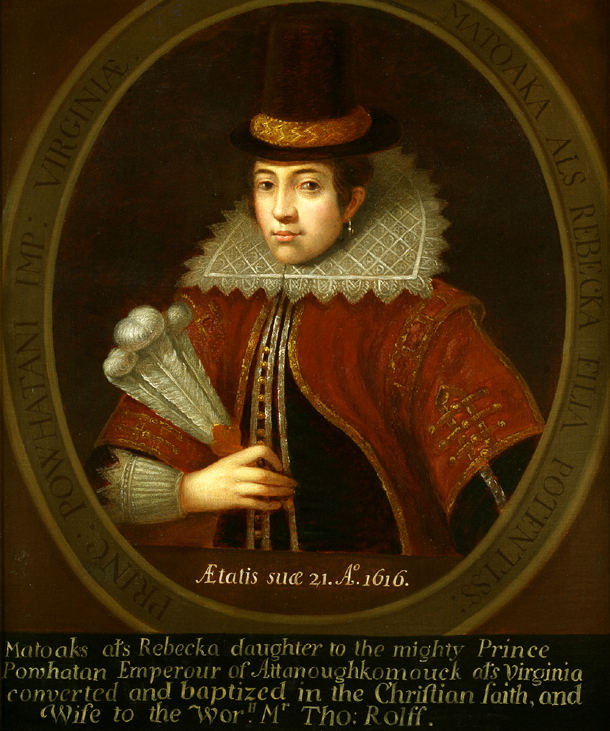
| Title | Pocahontas |
| Artist/Maker |
Unidentified
|
| Date | n. d. |
| Medium | Oil on canvas |
| Dimensions | Sight: h. 30 x w. 25 in. (h. 76.2 x w. 63.5 cm)
Framed: h. 40.5 x w. 35.5 x d. 3 in. (h. 102.87 x w. 90.17 x d. 7.62 cm) |
| Credit Line | U.S. Senate Collection |
| Accession Number | 31.00014.000 |
The Senate’s portrait of Pocahontas is a copy of an oil painting that originally hung in Booton Hall, the English ancestral home of her husband’s family, the Rolfes. The Booton Hall portrait is known to have existed by 1760-70. It was later acquired by American art collector Andrew Mellon and is now held by the Smithsonian Institution’s National Portrait Gallery in Washington, D.C. Scholars believe that the original oil–-once thought to be a life portrait–-was actually based on an existing 1616 Dutch engraving by Simon van de Passe. Philip Barbour, in his book Pocahontas and Her World, presents evidence to support this conclusion: “A European portrait-painter of 1616-1617 would surely have noticed that Pocahontas was 'brown’ or 'tawny,’ like the rest of her people. But the color of her skin in the portrait is clearly European, and her hair is a European brown, not an Indian black. Relying only on the engraving, a painter-copyist would not have recognized his own error.” [1] In both the National Portrait Gallery and Senate portraits, the painted legend at the base of the picture erroneously identifies Pocahontas’s husband with the Christian name “Tho:” for Thomas, whereas the engraving by van de Passe correctly lists him as “Joh:” for John.
Henry S. Wellcome, an Indiana native who lived for many years in London, apparently commissioned the Senate’s oil copy for exhibit at the World’s Columbian Exposition in Chicago in 1893. After the fair, the picture was displayed at the U.S. Capitol. It was officially presented to the Senate by Wellcome in 1899.
1. Philip L. Barbour, Pocahontas and Her World (Boston: Houghton Mifflin, 1970), 233.
Pocahontas is renowned in American legend for saving the life of English colonial leader Captain John Smith. She was the daughter of Powhatan, chief of a large Algonquian confederacy based in the Tidewater region of Virginia. Powhatan's loose alliance had frequent conflicts with the English colonists who founded Jamestown in 1607 on Native American land. Pocahontas often visited this settlement, becoming a liaison between her father's people and the English. By Smith's later account, the young Pocahontas, also known as Matoaka, spared Smith's life in 1607. She threw herself over his body to prevent his execution at the hands of her father and his men.
In 1613, during a period of recurrent discord, English leaders captured Pocahontas and brought her against her will to Jamestown, so that she could be used as a bargaining pawn. Once there she was treated graciously by the acting governor. She eventually converted to Christianity, taking the name Rebecca. Her 1614 marriage to Englishman John Rolfe secured a temporary peace between the colonists and the Algonquians, which aided in the establishment of the Jamestown colony. Pocahontas accompanied her husband to England in 1616, where she was received at court as a princess. She died of smallpox seven months later while still in England. Her son Thomas later immigrated to Virginia.